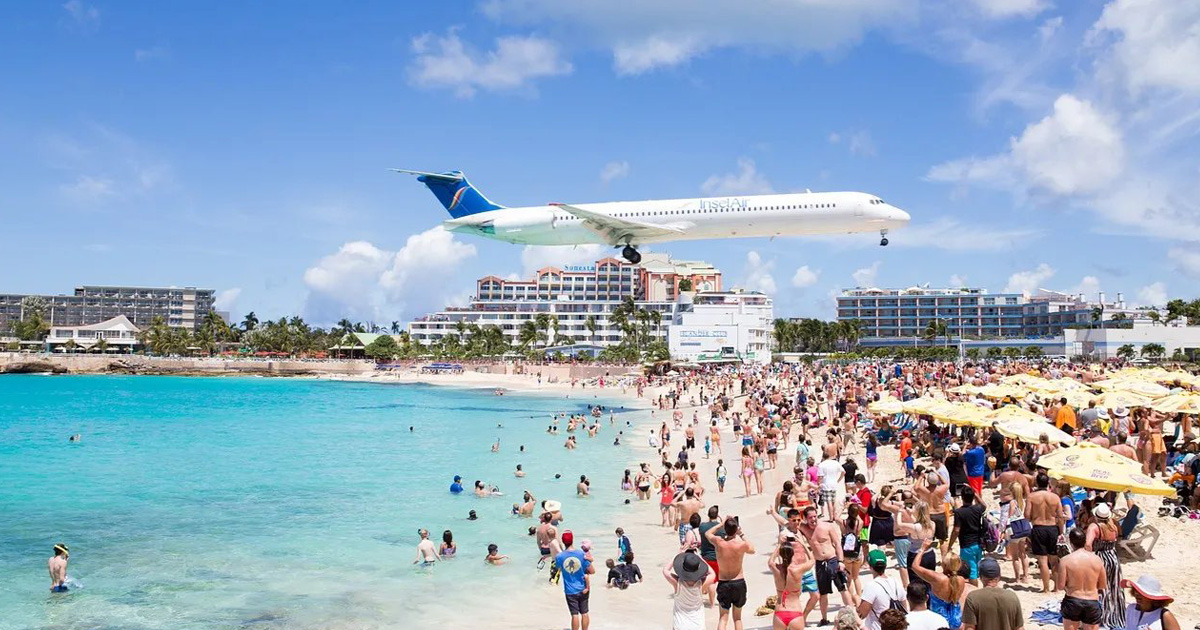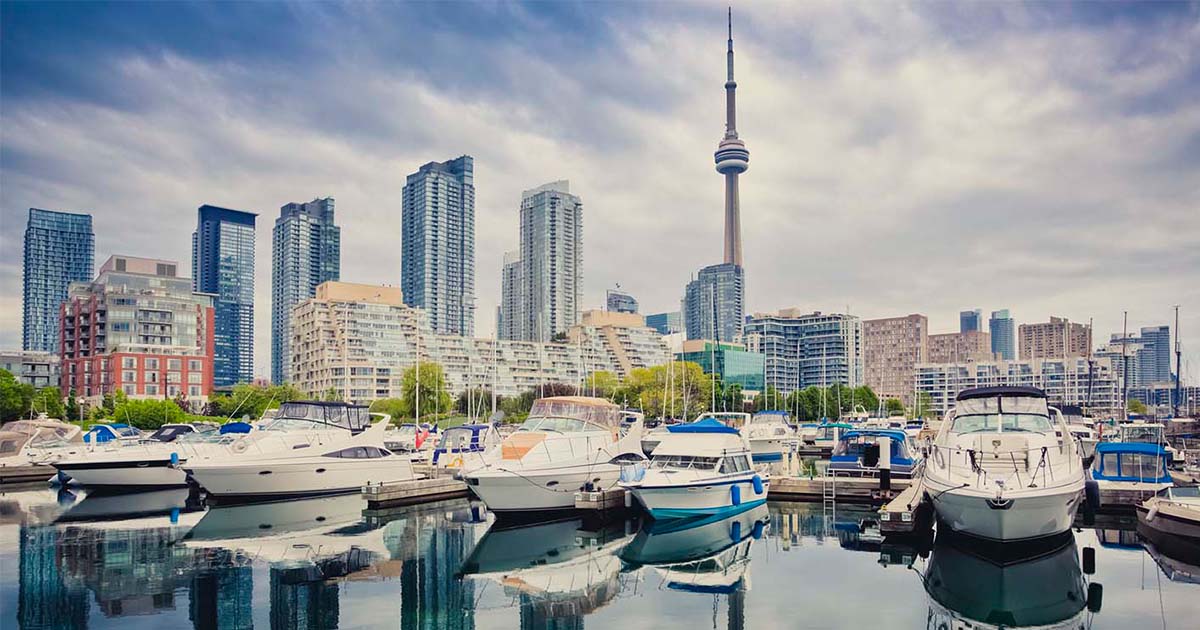The 25 Terrifying Airports Pilots Pray To Avoid :Discover the heart-stopping adventures of pilots as they face daring challenges in landing their planes safely. They navigate through difficult weather conditions, treacherous terrains, and make split-second decisions. In this exciting article, we explore the 25 most dangerous airports in the world. These airports test pilots’ skills and respect for nature’s forces. From the awe-inspiring Tenzing-Hillary Airport in the Himalayas to the adrenaline-inducing Gustaf III Airport in the Caribbean, each destination presents unique obstacles that require focus, skill, and quick thinking.
Prepare to be captivated by tales of daring landings and nerve-wracking maneuvers. From the fascinating Kansai International Airport in Japan to the icy challenges of the Ice Runway in Antarctica, these airports showcase the determination of pilots conquering the skies. Brace yourself for narratives of pilots battling crosswinds, foggy valleys, and executing precise landings on extremely short runways.
So get ready for an exciting journey as we explore these remarkable airports that command respect and inspire awe. Join us as we uncover the world’s 50 most dangerous airports, where pilots face the ultimate test of their skills and every landing becomes a triumph over adversity. Gain a new appreciation for the incredible individuals who bravely conquer these challenges day after day in the thrilling skies.
1. Diego Garcia Airport, British Indian Ocean Territory (Low)
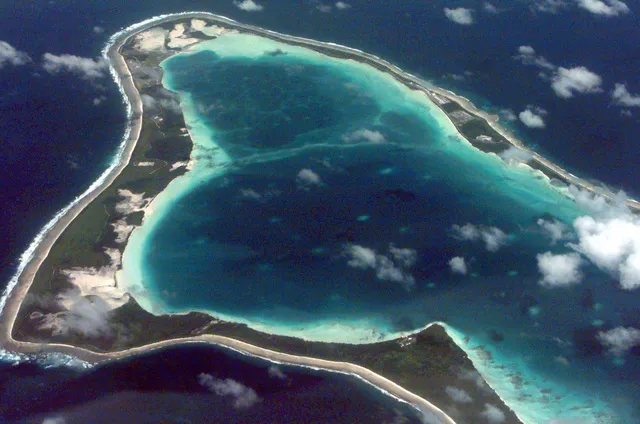
- Year Built: 1971
- Risk Factor: Low
- Passenger Traffic: Low
- Elevation: Sea level
- Notable Features: Remote location, military base
Diego Garcia Airport, found in the British Indian Ocean Territory, has special qualities that set it apart. Constructed in 1971, the airport serves mainly as a military base and is not available for public commercial flights. The level of risk is generally low due to controlled access and minimal passenger traffic.
Located at sea level, the airport operates in a secluded area, surrounded by the expansive Indian Ocean. Its significant aspect lies in its strategic military significance, serving as a vital base for military operations and surveillance in the region. Diego Garcia Airport plays a critical role in upholding security and stability in the Indian Ocean area.
2. Narsarsuaq Airport, Greenland (Low)
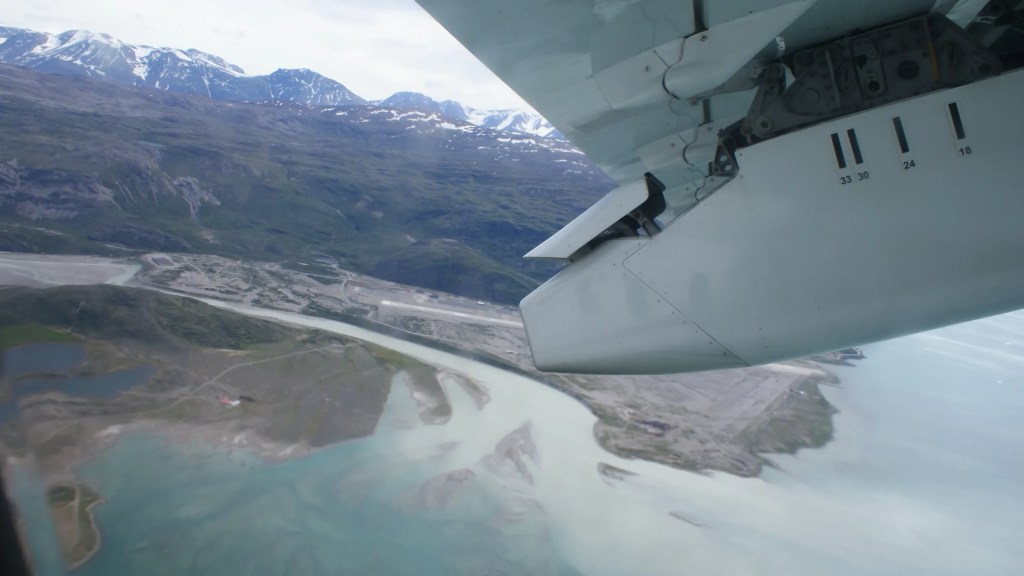
- Year Built: 1941
- Risk Factor: Low
- Passenger Traffic: Moderate
- Elevation: 32 meters (105 feet)
- Notable Features: Challenging weather, remote location
Narsarsuaq Airport, found in Greenland, has been operational since its construction in 1941. It poses significant challenges for pilots due to its demanding weather conditions and remote location, resulting in a high risk factor. The airport serves as a vital connection for domestic and international travel to and from Greenland, despite experiencing moderate passenger traffic.
Situated at an elevation of 32 meters (105 feet) above sea level, pilots must navigate through the unpredictable Arctic climate, which includes fog, limited visibility, and strong crosswinds. The airport’s remote location adds an extra layer of complexity, requiring careful planning and preparedness for operations. Nevertheless, Narsarsuaq Airport plays a crucial role in linking Greenland with the rest of the world.
3. Quito International Airport, Ecuador (Low)
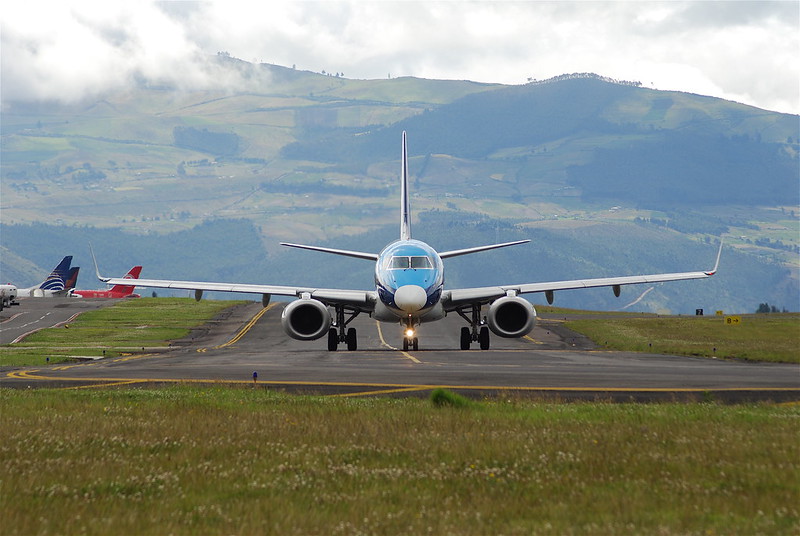
- Year Built: 1960
- Risk Factor: Low
- Passenger Traffic: High
- Elevation: 2,800 meters (9,186 feet)
- Notable Features: High altitude, challenging approach
Quito International Airport, located in Ecuador, has a fascinating history dating back to its establishment in 1960. It serves as a major entry point to Ecuador and handles a significant amount of passenger traffic. The risk level is considered moderate due to various factors, including its high altitude and challenging approach.
Situated at an elevation of 2,800 meters (9,186 feet), the airport’s position in the Andean highlands presents unique difficulties for pilots. Navigating through mountainous terrain and dealing with unpredictable weather conditions are part of the approach to the airport. The notable aspect of Quito International Airport is its high altitude, which demands skilled pilots and specific considerations for aircraft to ensure safe takeoffs and landings.
4. La Aurora International Airport, Guatemala (Moderate)
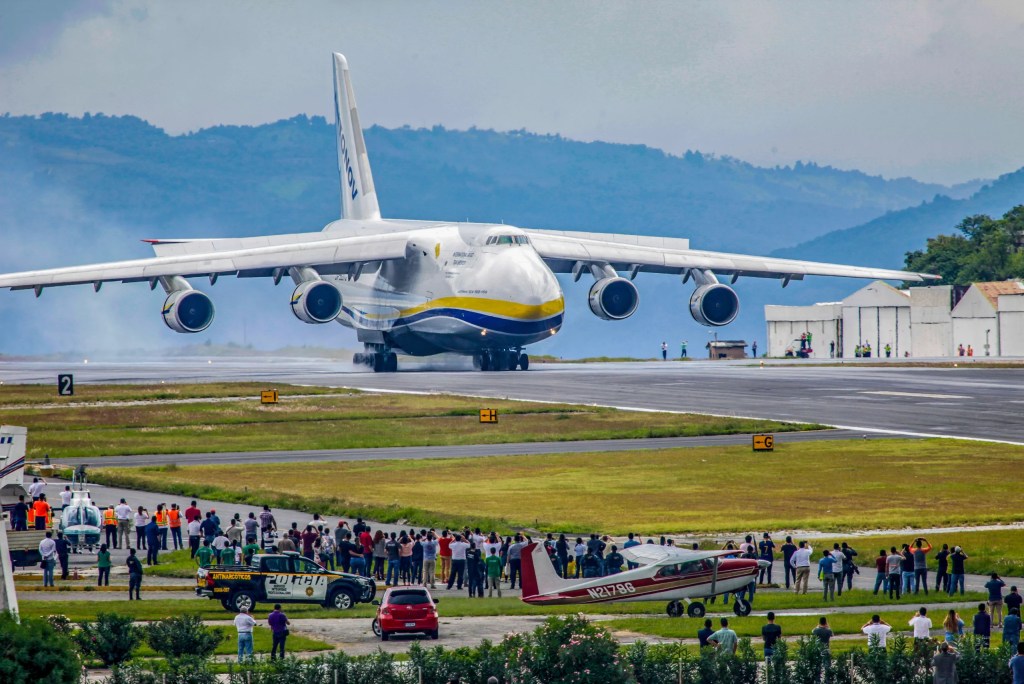
- Year Built: 1942
- Risk Factor: Moderate
- Passenger Traffic: High
- Elevation: 1,519 meters (4,984 feet)
- Notable Features: Busy airspace, mountainous surroundings
La Aurora International Airport, situated in Guatemala, has been facilitating travelers since it was built in 1942. With a moderate level of risk, this airport presents distinct challenges for pilots due to its busy airspace and mountainous surroundings. It caters to a high volume of passengers, serving as a key entry point to Guatemala and an essential hub for both international and domestic flights.
Located at an elevation of 1,519 meters (4,984 feet) above sea level, the airport’s height adds complexity to operations. Pilots must navigate through mountainous terrain and strictly adhere to air traffic control procedures. Despite these challenges, La Aurora International Airport remains a vital transportation hub, connecting Guatemala with the rest of the world.
5. Skiathos International Airport, Greece (Moderate)
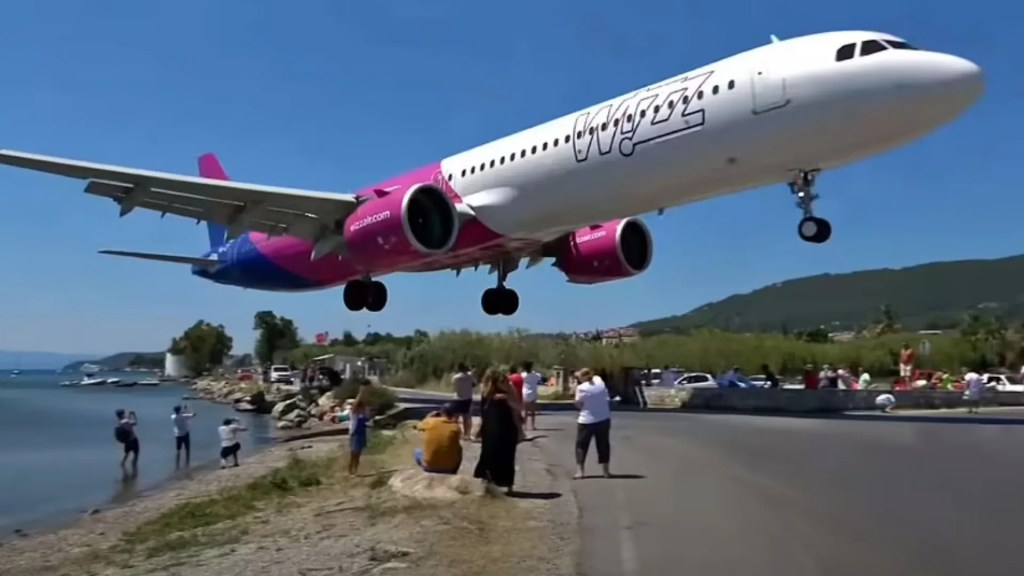
- Year Built: 1972
- Risk Factor: Moderate
- Passenger Traffic: High
- Elevation: 14 meters (46 feet)
- Notable Features: Challenging approach, scenic surroundings
Skiathos International Airport, situated in Greece, was constructed in 1972 and has gained popularity among tourists. The airport faces a moderate level of risk due to its unique geographical features. One notable challenge for pilots is the airport’s short runway and the presence of surrounding mountains.
This requires precise control during takeoff and landing. Additionally, the airport attracts a significant number of passengers, especially during the peak summer season when visitors come to enjoy the beauty of Skiathos Island. With its close proximity to the sea and breathtaking scenery, Skiathos International Airport offers an exciting landing experience for passengers and serves as a thrilling test for skilled aviators.
6. Qamdo Bamda Airport, China (Moderate)
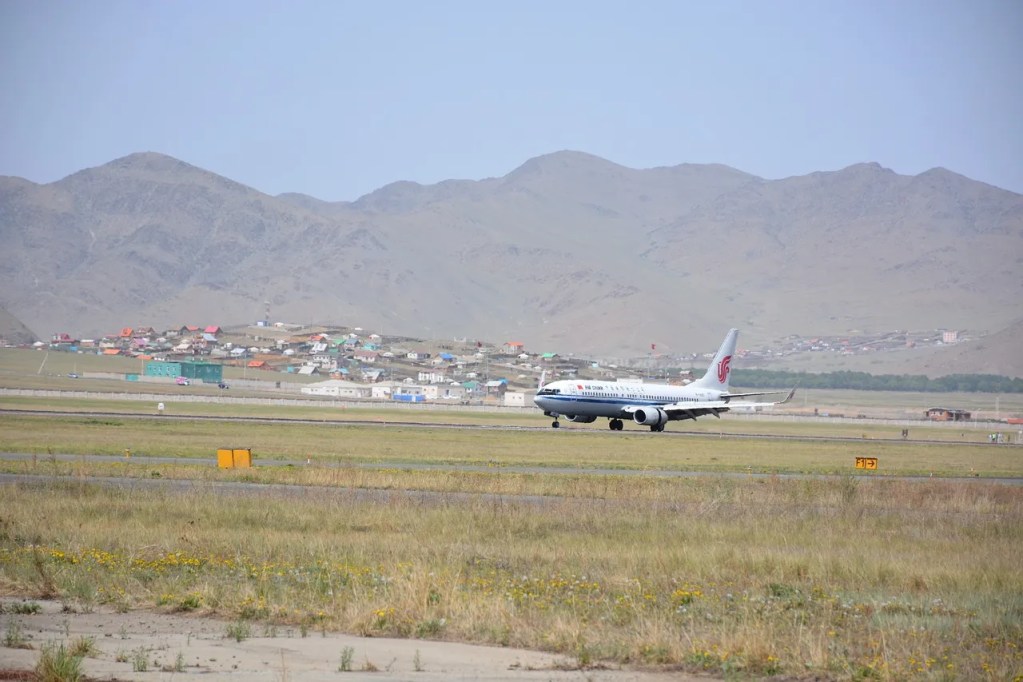
- Year Built: 1994
- Risk Factor: Moderate
- Passenger Traffic: Moderate
- Elevation: 4,334 meters (14,219 feet)
- Notable Features: High altitude, long runway
Qamdo Bamda Airport, located in China, is an impressive engineering achievement. It was built in 1994 and sits at a remarkable altitude of 4,334 meters (14,219 feet) above sea level, making it one of the highest airports globally. The risk level is moderate due to the challenging weather conditions and the requirement for specialized equipment and pilot training to handle operations at such high altitudes.
While not a major international hub, Qamdo Bamda Airport manages a moderate amount of passenger traffic, connecting the region to domestic and limited international destinations. A notable feature of the airport is its long runway, designed to accommodate aircraft taking off and landing at such high altitudes, ensuring safe and efficient operations.
7. Santos Dumont Airport, Brazil (Moderate)
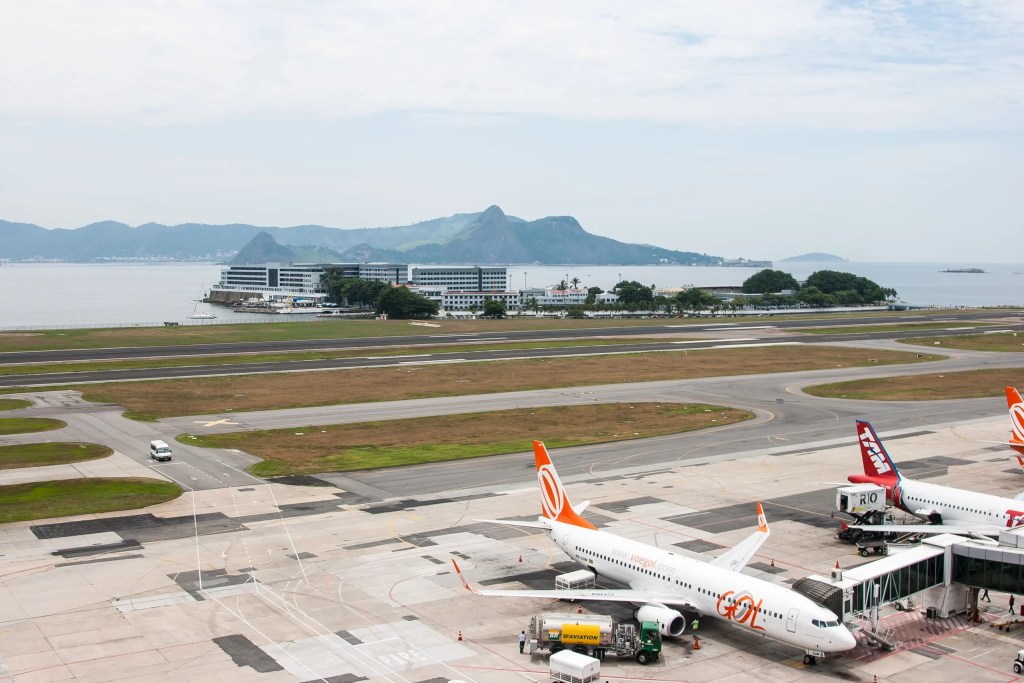
- Year Built: 1936
- Risk Factor: Moderate
- Passenger Traffic: High
- Elevation: 3 meters (10 feet)
- Notable Features: Urban surroundings, short runway
Santos Dumont Airport, located in Brazil, has a rich history dating back to its construction in 1936. With a moderate risk factor, this airport presents unique challenges to pilots due to its urban surroundings and short runway. Serving as a major hub for domestic flights, Santos Dumont Airport experiences high passenger traffic, making it a bustling and busy aviation center.
Situated at an elevation of 3 meters (10 feet) above sea level, pilots must navigate through the complex airspace and manage the increased air traffic in the area. The short runway at Santos Dumont Airport demands precise control and maneuvering during landing and takeoff, requiring skilled pilots to safely operate in this dynamic and demanding environment.
8. Ketchikan International Airport, Alaska, USA (Moderate)
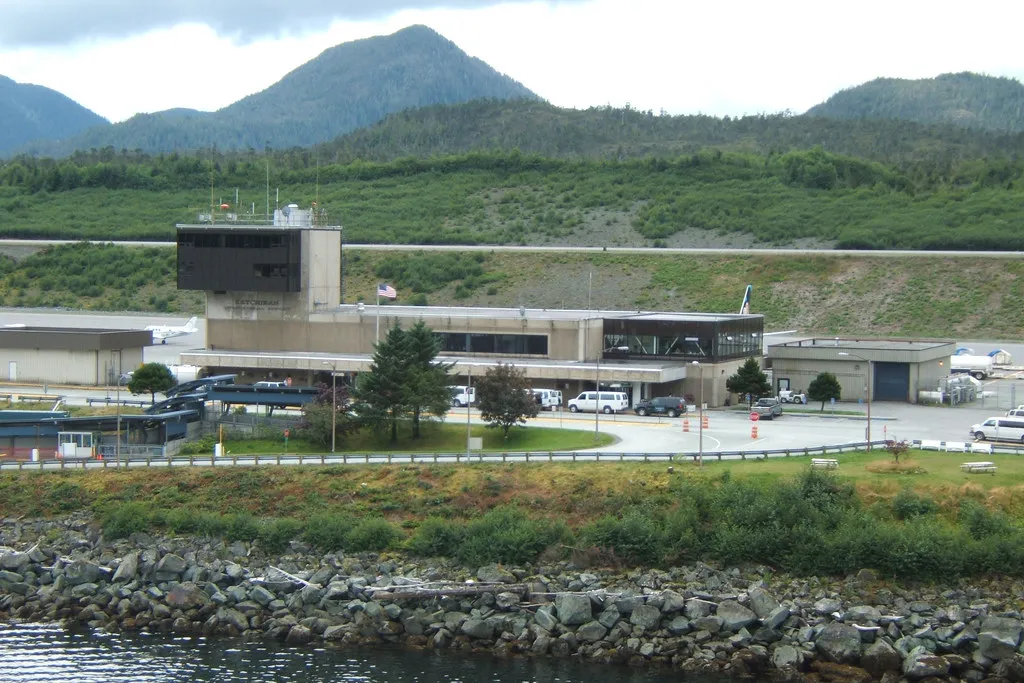
- Year Built: 1973
- Risk Factor: High
- Passenger Traffic: Moderate
- Elevation: 32 meters (105 feet)
- Notable Features: Challenging weather conditions, short runway
Ketchikan International Airport, located in southeastern Alaska, is famous for its challenging weather conditions and difficult approaches. It was constructed in 1973 and serves as a crucial transportation hub for the region. Surrounded by mountains and located near the Tongass National Forest, pilots must navigate through unpredictable fog, rain, and strong crosswinds, which are frequent occurrences in this area. The ever-changing weather patterns create a demanding environment for aviators.
Furthermore, the airport’s relatively short runway adds an extra layer of complexity, necessitating precise control during takeoff and landing. Despite the challenges, Ketchikan International Airport maintains a moderate level of passenger traffic, catering to both local residents and visitors to the region. The airport sits at an elevation of approximately 32 meters (105 feet) above sea level. The demanding weather conditions and the requirement for skilled pilots experienced in flying in mountainous regions and adverse weather conditions make Ketchikan International Airport a facility that demands exceptional expertise and caution.
9. Courchevel Altiport, France (High)
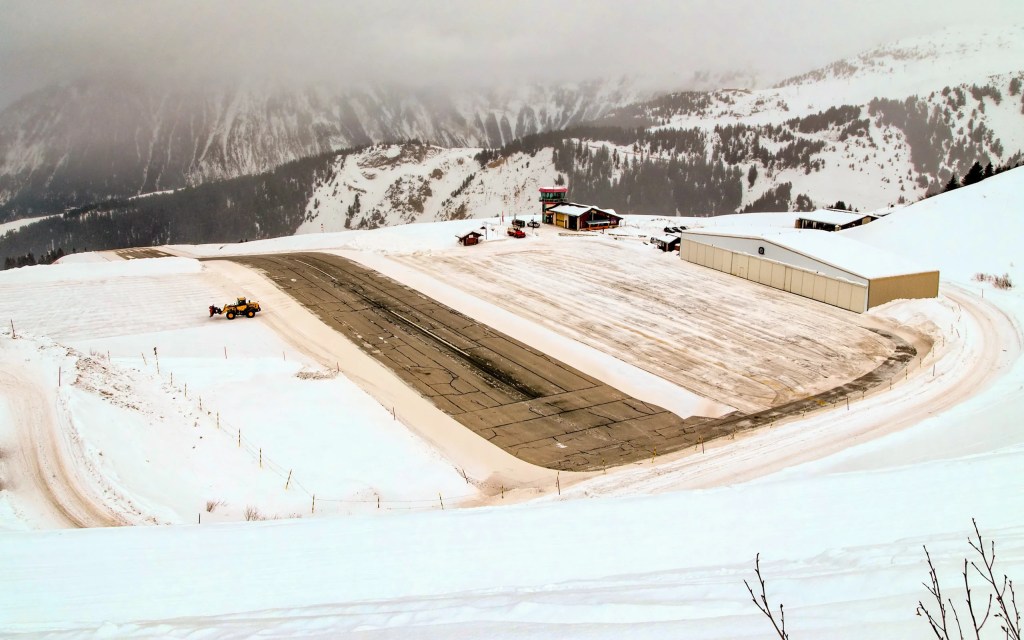
- Year Built: 1961
- Risk Factor: High
- Passenger Traffic: Low
- Elevation: 2,008 meters (6,588 feet)
- Notable Features: Challenging approach, winter operations
Located in the French Alps, Courchevel Altiport is famous for its challenging approach. The airport was built in 1961 and has a short runway situated on a steep slope, surrounded by mountains on one side and a steep drop on the other. Pilots must perform a steep descent and precise maneuvers to land safely. The presence of ice and snow on the runway during winter months adds to the difficulty and risk.
Pilots who navigate Courchevel Altiport need exceptional skills and nerves of steel to handle the unique demands of this dangerous landing. Despite the risks involved, the airport has low passenger traffic, mainly serving private aircraft and ski enthusiasts who want to access the popular Courchevel ski resort. Situated at an elevation of 2,008 meters (6,588 feet), the airport requires specialized procedures and pilot training. The challenging approach and winter operations make Courchevel Altiport an exciting destination for aviation enthusiasts and daring pilots.
10. Paro Airport, Bhutan (High)
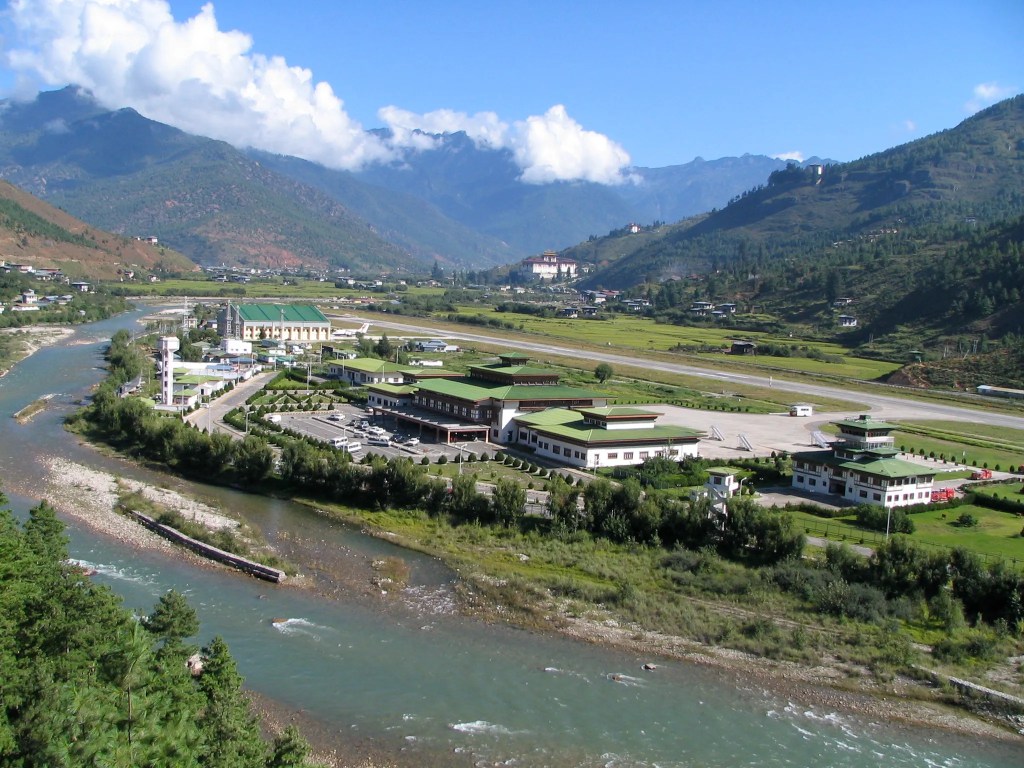
- Year Built: 1983
- Risk Factor: High
- Passenger Traffic: Moderate
- Elevation: 2,235 meters (7,333 feet)
- Notable Features: Mountainous approach, limited pilot qualification
Nestled in the deep valley of the Eastern Himalayas, Paro Airport in Bhutan was established in 1983 and is famous for its thrilling approach. Surrounded by towering peaks, the airport’s location presents a challenging obstacle for pilots. They must navigate through narrow mountain passes and make a sharp turn to align with the runway. The unpredictable weather, including strong crosswinds and low cloud cover, adds an extra layer of difficulty to landings at Paro Airport.
Due to the demanding nature of the airport’s approach, only a few specially trained pilots are qualified to land here. The risk level remains high, making it one of the most challenging and feared airports worldwide. Despite the risks, Paro Airport manages a moderate amount of passenger traffic, mainly serving as the primary international gateway to Bhutan. Situated at an elevation of 2,235 meters (7,333 feet), the airport requires precision and skill from pilots to safely navigate the mountainous approach.
11. Toncontín International Airport, Honduras (High)
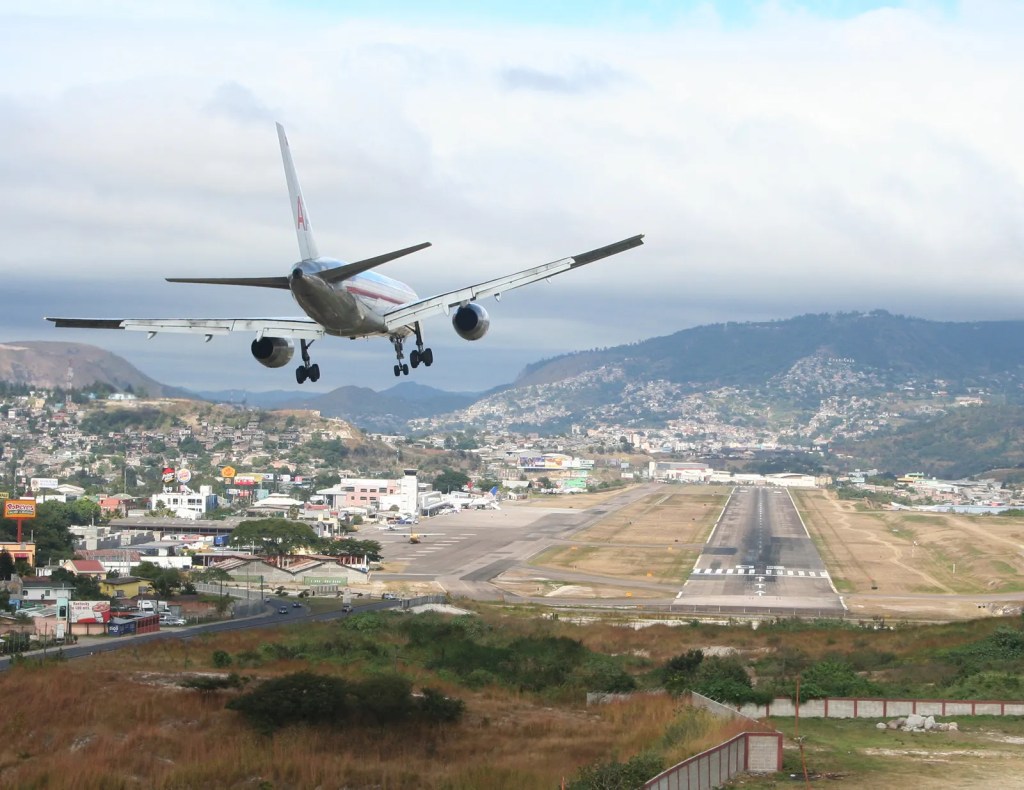
- Year Built: 1934
- Risk Factor: High
- Passenger Traffic: Moderate
- Elevation: 1,005 meters (3,297 feet)
- Notable Features: Short runway, challenging terrain
Toncontín International Airport in Honduras, established in 1934, is famous for its challenging approach and short runway. Surrounded by mountains and situated in a densely populated area, pilots have to navigate through a narrow valley before making a steep descent to reach the runway. The airport’s close proximity to residential areas and rugged terrain makes it a demanding place to land. Furthermore, the short length of the runway presents challenges for larger aircraft, requiring skilled maneuvering and precise control during takeoff and landing.
The risk level is high, and pilots must maintain a high level of focus and skill to ensure safe operations at Toncontín International Airport. Despite the difficulties, the airport manages a moderate amount of passenger traffic, serving as the primary international gateway to Honduras. Located at an elevation of 1,005 meters (3,297 feet), the airport’s unique features and demanding conditions continue to make it a nerve-wracking destination for pilots.
12. Princess Juliana International Airport, St. Maarten (High)

- Year Built: 1943
- Risk Factor: High
- Passenger Traffic: High
- Elevation: 4 meters (13 feet)
- Notable Features: Low-altitude approach over Maho Beach
Princess Juliana International Airport in St. Maarten, established in 1943, is famous for its high-risk approach and unique location. Located on the Dutch side of the island, the airport has a relatively short runway that requires pilots to make a low-altitude approach over the beautiful Maho Beach. This makes the beach a popular spot for aviation enthusiasts who want a thrilling and close-up experience.
However, the low-altitude approach and the powerful jet blast during takeoff can create challenging conditions for both pilots and beachgoers. The risk level is high, and pilots need to be precise and skilled to navigate the narrow flight path and land safely. Despite the challenges, Princess Juliana International Airport handles a large number of passengers and serves as a major hub for the Caribbean region. It sits at a mere elevation of 4 meters (13 feet) above sea level, and its unique features and picturesque setting contribute to its reputation as one of the most exciting and feared airports in the world.
13. Gibraltar International Airport, Gibraltar (High)
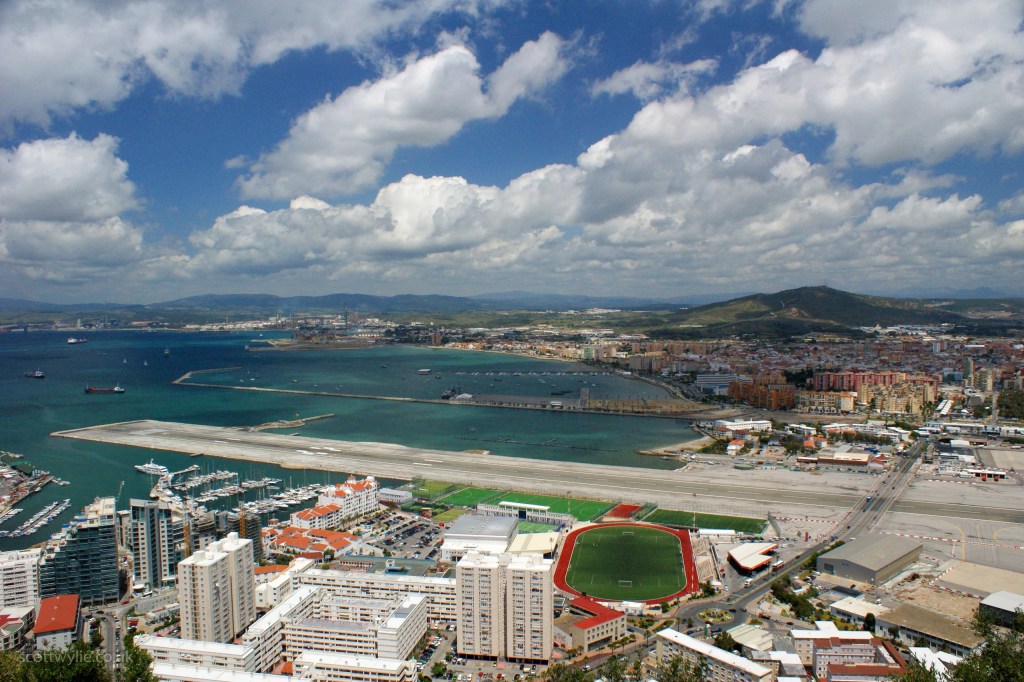
- Year Built: 1939
- Risk Factor: Moderate
- Passenger Traffic: Moderate
- Elevation: 5 meters (16 feet)
- Notable Features: Crossing runway, proximity to the border
Gibraltar International Airport, constructed in 1939, is situated on the British Overseas Territory of Gibraltar. The airport stands out for its distinctive characteristics, including a runway that crosses the main road connecting Gibraltar and Spain. Whenever an aircraft is taking off or landing, the road must be closed, which adds complexity to the operations. Given the limited space and proximity to the border, pilots must navigate with caution during takeoff and landing to ensure safety.
Although the risk level is considered moderate, the airport’s location presents challenges due to variable wind conditions and frequent crosswinds. Despite this, Gibraltar International Airport manages a moderate amount of passenger traffic and serves as an important gateway to the region. Positioned at an elevation of 5 meters (16 feet) above sea level, the airport’s unique features and extraordinary setting make it a noteworthy and fascinating destination for pilots.
14. Madeira Airport, Portugal (High)
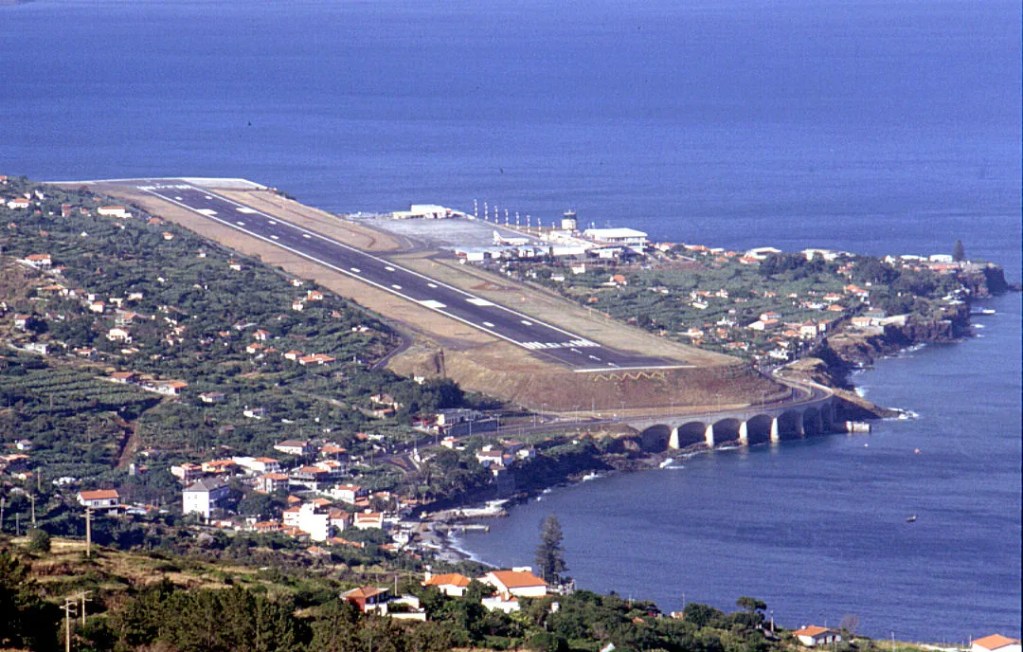
- Year Built: 1964
- Risk Factor: High
- Passenger Traffic: High
- Elevation: 58 meters (190 feet)
- Notable Features: Short runway, challenging approach over the ocean
Madeira Airport, also known as Cristiano Ronaldo Madeira International Airport, was constructed in 1964 and is located on the Portuguese island of Madeira. The airport is famous for being high-risk and requiring a difficult approach. Its runway is relatively short, so pilots must undergo special training and certification to land there. Moreover, the airport’s location poses a unique challenge with the ocean on one side and steep mountains on the other.
Pilots must carefully descend over the ocean and make a precise landing on the runway during a complex approach. Unpredictable weather conditions, such as strong crosswinds and fog, add to the airport’s reputation as a challenging destination. Despite the high risk, Madeira Airport handles a significant amount of passenger traffic and serves as a crucial connection for the island. Positioned at an elevation of 58 meters (190 feet) above sea level, the airport’s remarkable features and stunning surroundings make it an enthralling yet demanding place for pilots.
15. Barra Airport, Scotland (High)
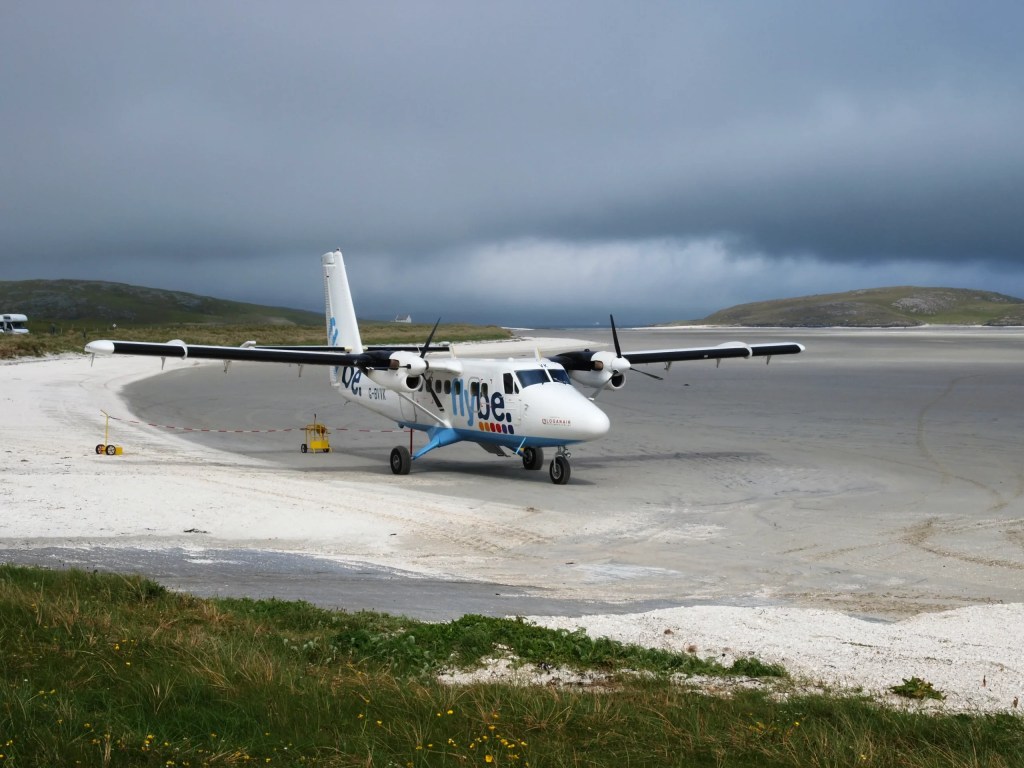
- Year Built: 1936
- Risk Factor: Moderate
- Passenger Traffic: Low
- Elevation: Sea level
- Notable Features: Unique beach runway, tidal conditions
Barra Airport, located in the Outer Hebrides of Scotland, is famous for its one-of-a-kind beach runway and tidal operations. Established in 1936, it remains one of the most extraordinary airports worldwide. Instead of a traditional runway, the airport uses a beach as the landing surface during low tide. This means that flight schedules at Barra Airport depend on the tides and require careful planning and coordination.
Pilots must time their arrivals and departures to coincide with low tide when the beach is suitable for landing. The risk factor is considered moderate due to the challenges of operating on a beach runway and the potential for changing weather conditions. Despite the moderate risk, Barra Airport has relatively low passenger traffic, primarily serving the local community and providing scenic flights for tourists. Situated at sea level, the airport’s unique features and the breathtaking natural surroundings make it an unforgettable destination for pilots.
16. Wellington International Airport, New Zealand (High)
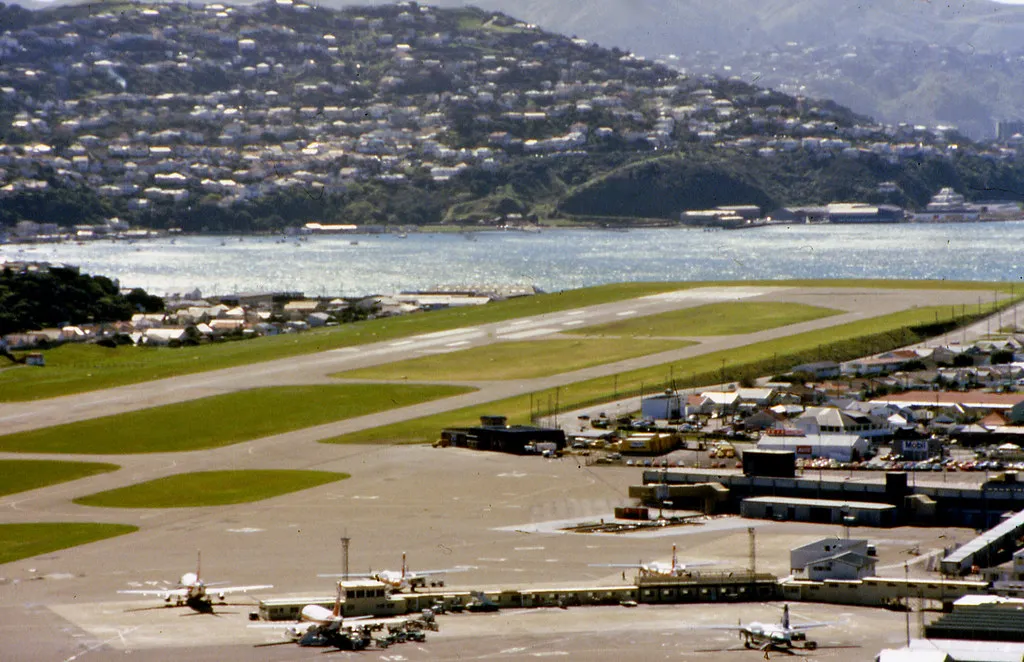
- Year Built: 1929
- Risk Factor: Moderate
- Passenger Traffic: High
- Elevation: 13 meters (43 feet)
- Notable Features: Challenging crosswinds, scenic approach
Wellington International Airport, located in New Zealand’s capital city, has been serving travelers since 1929. The airport has a moderate risk factor due to challenging crosswinds experienced by pilots during takeoff and landing. The city’s unique geography, situated between mountains and the sea, creates turbulent wind patterns that require skilled maneuvering by pilots.
Despite the moderate risk, Wellington International Airport handles a high volume of passenger traffic and is a major transportation hub for domestic and international flights. The airport is situated 13 meters (43 feet) above sea level and offers a scenic approach with stunning views of the harbor and nearby mountains. The combination of challenging crosswinds and beautiful surroundings makes Wellington International Airport a memorable destination for pilots.
17. Juancho E. Yrausquin Airport, Saba (High)
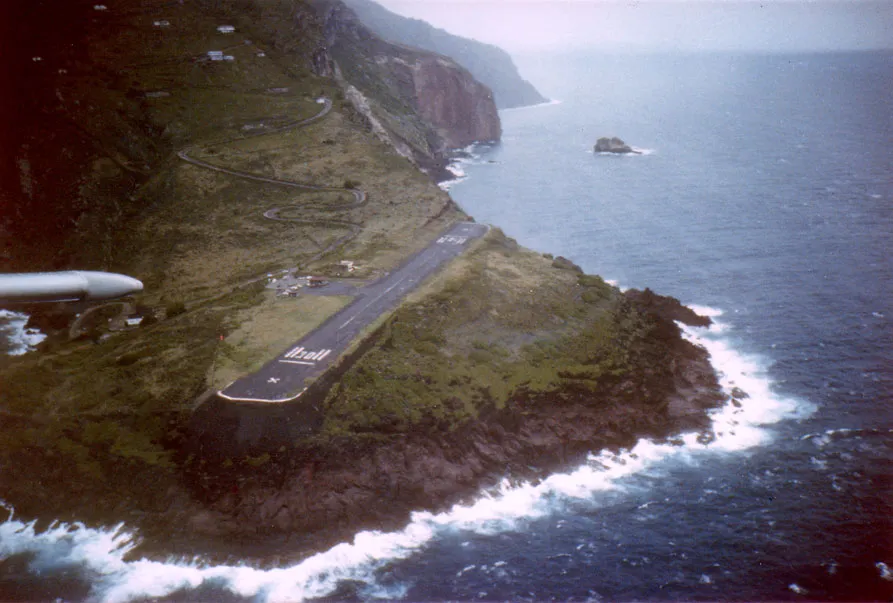
- Year Built: 1963
- Risk Factor: High
- Passenger Traffic: Low
- Elevation: 11 meters (36 feet)
- Notable Features: Short runway, cliff-edge location
Juancho E. Yrausquin Airport, located on the Caribbean island of Saba, was built in 1963 and is well-known for its high risk factor. The airport’s main feature is its extremely short runway, measuring only 400 meters (1,312 feet) in length. This limited runway, combined with its cliff-edge location, makes it one of the most challenging airports for pilots to land and take off from. Only small aircraft are able to operate at Juancho E. Yrausquin Airport due to the challenging terrain and approach.
Despite the high risk, the airport has low passenger traffic, primarily serving the local community and providing limited access to the island. Situated at an elevation of 11 meters (36 feet) above sea level, the airport offers a stunning view of the Caribbean Sea and the beautiful landscape of Saba. The unique combination of a short runway and its cliff-edge location makes Juancho E. Yrausquin Airport an intense yet captivating destination for pilots.
18. Kai Tak Airport, Hong Kong (High)

- Year Built: 1925
- Risk Factor: High
- Passenger Traffic: High
- Elevation: 3 meters (10 feet)
- Notable Features: Challenging approach, proximity to high-rise buildings
Kai Tak Airport, established in 1925 and now closed, was the main international airport in Hong Kong until 1998. The airport was famous for its high-risk factor, mainly due to the challenging approach that pilots had to navigate. The approach to Kai Tak Airport involved a steep descent over Victoria Harbour, with the aircraft flying close to tall buildings, requiring precise maneuvering to land safely.
Pilots had to deal with crosswinds, limited visibility, and a sharp turn just before touchdown. The airport had a high volume of passenger traffic, which added to the pressure on pilots to execute a safe landing. Located at an elevation of 3 meters (10 feet) above sea level, the airport provided a unique view of the vibrant city and the harbor. The combination of the demanding approach and the airport’s proximity to tall buildings made Kai Tak Airport one of the most thrilling and feared airports in the world.
19. Lukla Airport, Nepal (High)
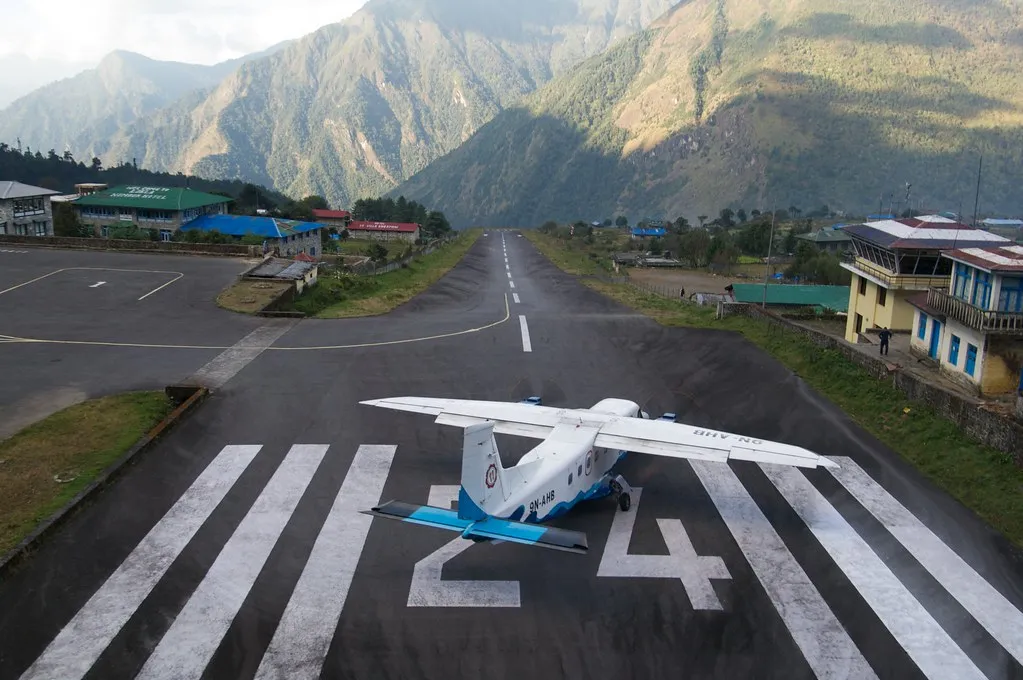
- Year Built: 1964
- Risk Factor: High
- Passenger Traffic: Moderate
- Elevation: 2,845 meters (9,334 feet)
- Notable Features: Short and inclined runway, challenging mountainous terrain
Lukla Airport, also known as Tenzing-Hillary Airport, was constructed in 1964 and is situated in Lukla, Nepal. It is famous for its high-risk factor and challenging mountainous terrain. Located amidst the majestic Himalayas, Lukla Airport has a short and sloping runway, making takeoffs and landings difficult. Pilots must navigate through narrow valleys and face unpredictable weather conditions, including strong winds and limited visibility.
The airport’s high elevation at 2,845 meters (9,334 feet) above sea level adds to the complexity due to lower air density. Despite the inherent risks, Lukla Airport serves as the gateway to the renowned trekking destination of Mount Everest and handles a moderate number of passengers. The awe-inspiring mountain vistas surrounding the airport make it an extraordinary but anxiety-inducing experience for both pilots and travelers.
20. Kansai International Airport, Japan (High)
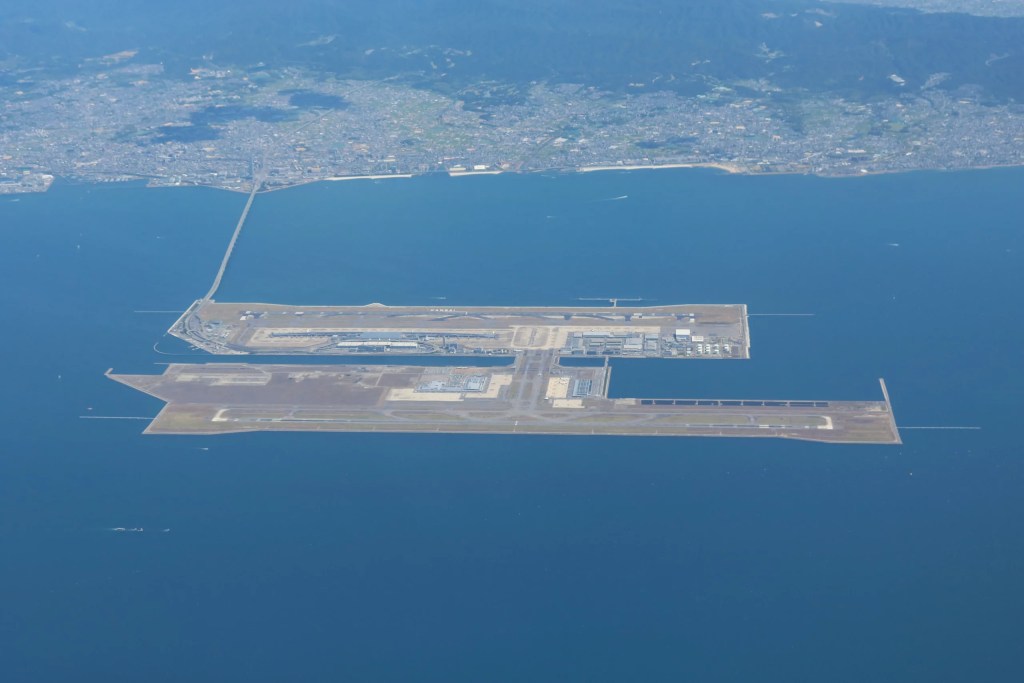
- Year Built: 1994
- Risk Factor: Moderate
- Passenger Traffic: High
- Elevation: Sea level
- Notable Features: Artificial island, proximity to water
Kansai International Airport, opened in 1994, is located on a man-made island in Osaka Bay, Japan. Its unique position presents both challenges and distinctive features. Being surrounded by water, the airport faces certain risks associated with coastal environments. However, the risk level is considered moderate due to extensive engineering and design measures implemented during its construction.
The airport serves as a major hub, accommodating a high volume of passengers from domestic and international destinations. Situated at sea level, Kansai International Airport provides convenient access to the bustling city of Osaka and serves as a gateway to the wider Kansai region of Japan. The airport’s proximity to water and its impressive artificial island design make it an architectural marvel and a significant transportation hub in the country.
21. The Ice Runway, Antarctica (High)
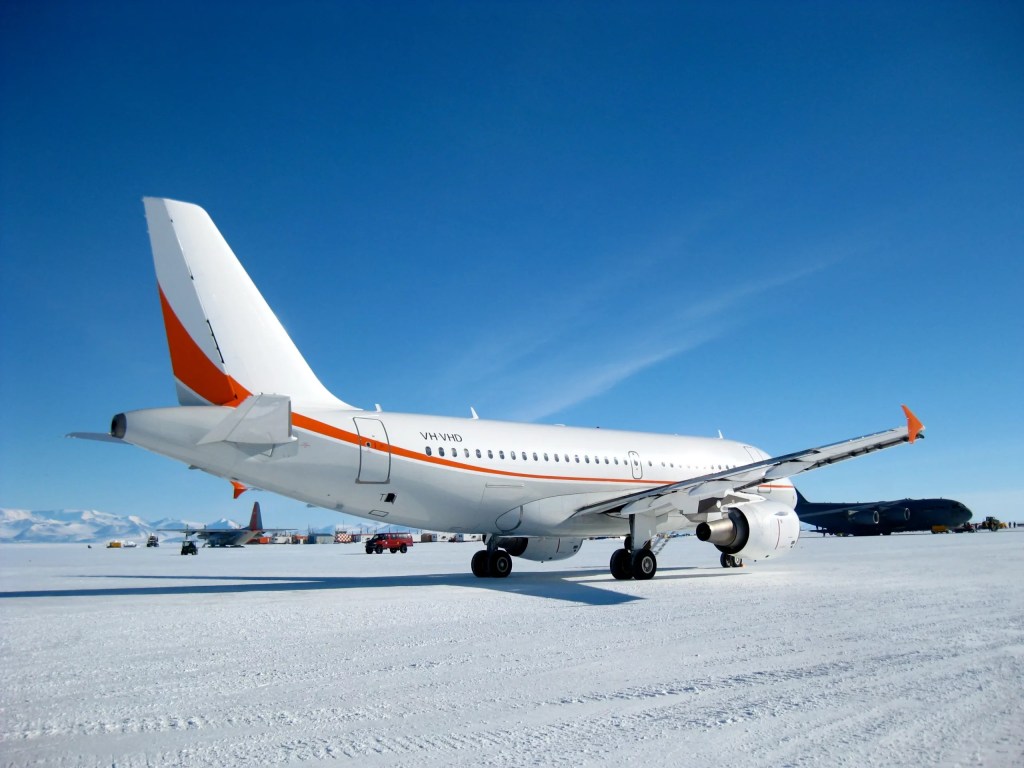
- Year Built: N/A
- Risk Factor: High
- Passenger Traffic: Low
- Elevation: Sea level
- Notable Features: Frozen sea ice, extreme weather conditions
The Ice Runway, situated near McMurdo Station in Antarctica, is a unique and perilous landing site primarily utilized during the continent’s summer season. As the name suggests, the runway is constructed on a frozen sea ice surface. Pilots encounter extreme weather conditions, including freezing temperatures, strong winds, and limited visibility, making it one of the most demanding landing experiences. The ever-changing ice conditions add an extra layer of complexity, necessitating regular maintenance to ensure a stable runway.
Despite its remote location, passenger traffic at the Ice Runway is relatively low, mainly serving scientific expeditions and logistical operations in Antarctica. Pilots who navigate this treacherous runway must possess exceptional skills to safely land on the icy surface and navigate the challenging Antarctic environment. The Ice Runway serves as a testament to human resourcefulness and determination in accessing one of the most inhospitable places on Earth.
22. Congonhas Airport, Brazil (High)
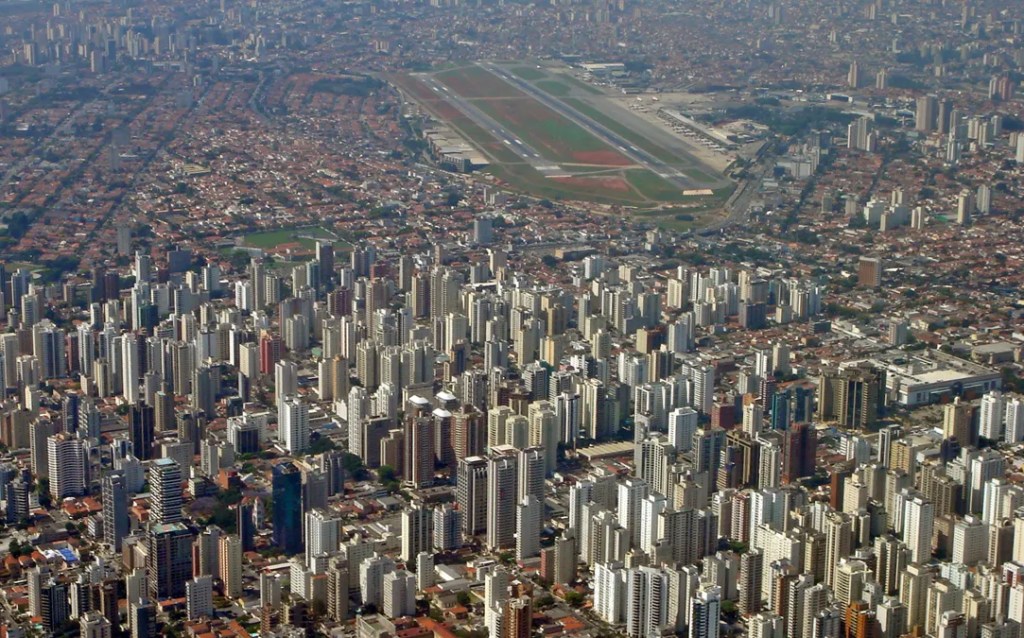
- Year Built: 1936
- Risk Factor: High
- Passenger Traffic: High
- Elevation: 802 meters (2,631 feet)
- Notable Features: Short runway, urban surroundings
Congonhas Airport, situated in São Paulo, Brazil, presents unique challenges to pilots due to its short runway and urban setting. Being located in a densely populated area, the airport requires pilots to navigate through a complex network of tall buildings during takeoff and landing. This demanding environment increases the risk of bird strikes and calls for precise control and maneuvering. Additionally, the runway itself is relatively short, demanding careful braking and constant awareness.
Pilots need to demonstrate exceptional skill and concentration to ensure safe operations at Congonhas Airport. Despite these challenges, the airport handles a high volume of passenger traffic, serving as a major domestic hub in Brazil. Congonhas Airport showcases the remarkable abilities and professionalism of pilots who expertly operate in intricate urban environments.
23. Gustaf III Airport, St. Barts (High)
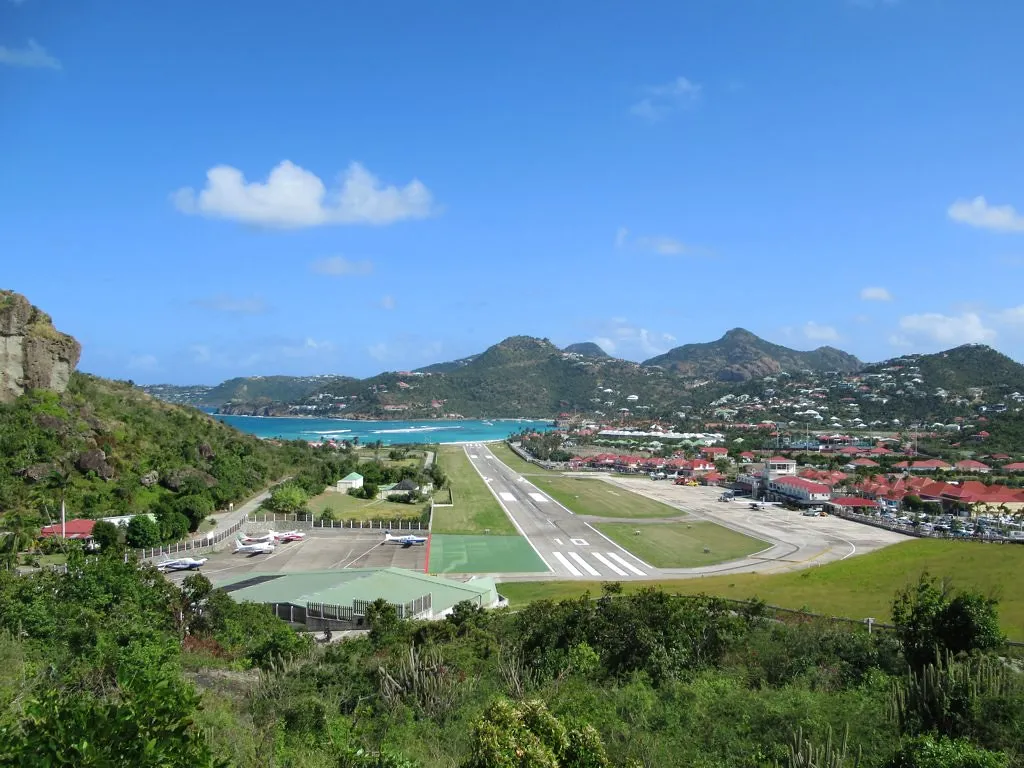
- Year Built: 1984
- Risk Factor: High
- Passenger Traffic: Moderate
- Elevation: 12 meters (39 feet)
- Notable Features: Short runway, challenging approach
Gustaf III Airport, situated on the beautiful Caribbean island of St. Barts, is famous for its short runway and challenging approach. Surrounded by steep hills and a crowded beach, pilots must make a steep descent over the hilltops before landing. The runway itself is only 650 meters long, providing little room for error. Pilots need to possess exceptional skills to navigate the difficult terrain, avoid obstacles, and make precise landings.
The risk factor at Gustaf III Airport is high due to the demanding approach and limited runway length. Despite these challenges, the airport manages a moderate amount of passenger traffic, serving as a gateway for visitors to the picturesque island of St. Barts. Gustaf III Airport highlights the remarkable abilities and expertise of pilots who skillfully maneuver on its compact and unconventional runway.
24. Svalbard Airport, Norway (High)
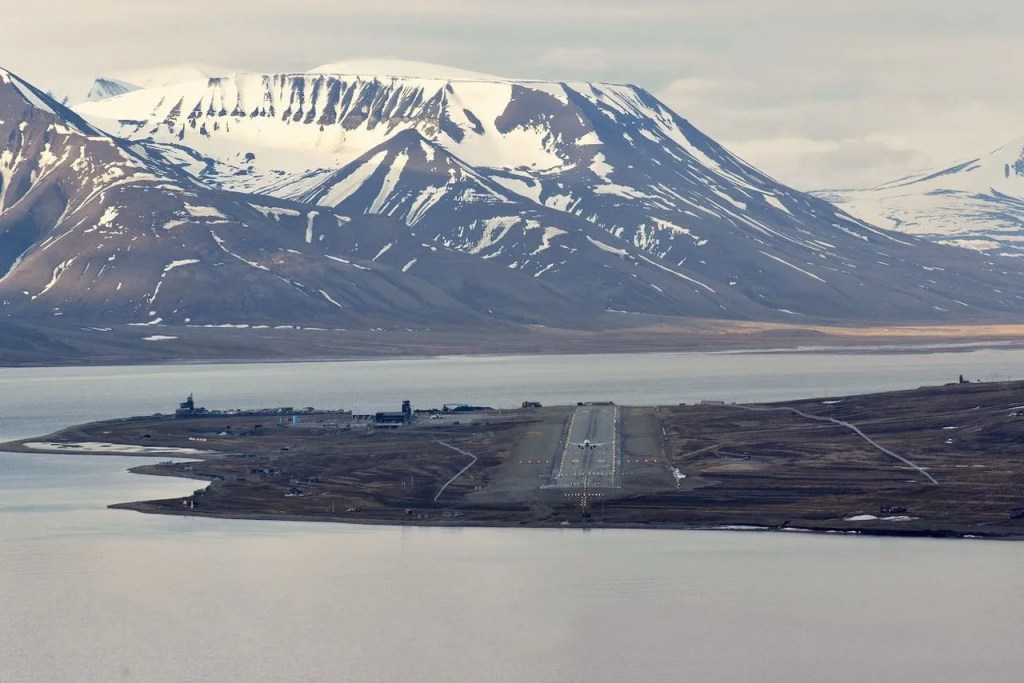
- Year Built: 1975
- Risk Factor: High
- Passenger Traffic: Moderate
- Elevation: 28 meters (92 feet)
- Notable Features: Arctic location, challenging weather conditions
Svalbard Airport, located on the Svalbard archipelago in Norway, was constructed in 1975 to facilitate transportation to this remote Arctic region. The airport presents significant challenges for pilots, earning a high risk factor due to its extreme weather conditions and unique location. Situated at a relatively low elevation of 28 meters (92 feet) above sea level, it is prone to strong winds, low temperatures, and frequent snowfall.
Despite the difficulties, the airport manages a moderate amount of passenger traffic, serving as a vital connection between Svalbard and mainland Norway. Pilots landing at Svalbard Airport must navigate icy runways and be prepared for rapid weather changes, making it a nerve-wracking experience. With its Arctic location and demanding weather conditions, Svalbard Airport is widely regarded as one of the most challenging airports in the world.
25. Hamid Karzai International Airport, Afghanistan (High)
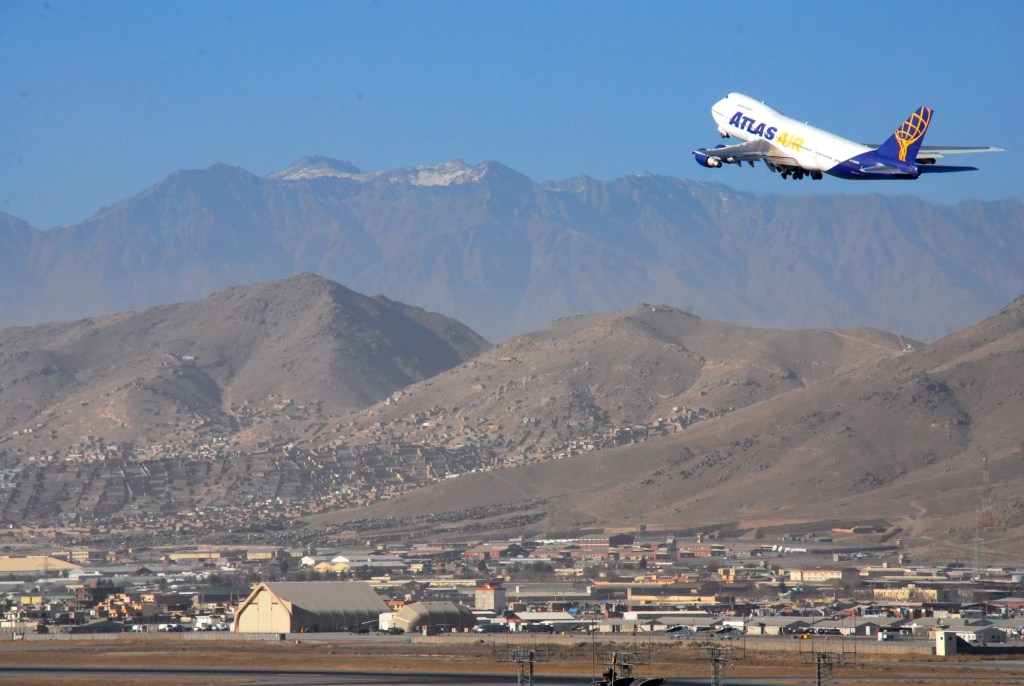
- Year Built: 1960
- Risk Factor: High
- Passenger Traffic: Moderate
- Elevation: 1,798 meters (5,899 feet)
- Notable Features: Security concerns, challenging environment
Hamid Karzai International Airport, situated in Afghanistan, has a significant history dating back to its establishment in 1960. It serves as a crucial transportation hub for the country, handling moderate passenger traffic. However, the risk factor is considered high due to ongoing security concerns in the region.
The airport’s location at an elevation of 1,798 meters (5,899 feet) adds complexity for pilots. The challenging environment, combined with the security situation, necessitates skilled aviators who can navigate through difficult conditions while prioritizing safety and security. Hamid Karzai International Airport remains a vital connection for air travel in Afghanistan, demanding utmost caution and preparedness from all involved.
Conclusion
As we come to the end of our thrilling exploration of the world’s most challenging airports, it becomes evident that these airports demand exceptional skill, precision, and courage from pilots. From the daunting slopes of Courchevel Altiport to the heart-stopping approach of Paro Airport, these airports have become legendary for their unique difficulties.
For pilots, these airports are a constant source of anxiety as they navigate through unpredictable weather, tight spaces, and daunting landscapes. However, they also symbolize the indomitable spirit and unwavering determination of those who embrace the challenge of conquering the skies.
While these airports inspire awe and wonder, they also serve as a reminder of the remarkable abilities possessed by pilots worldwide. With their unwavering focus, meticulous planning, and years of experience, these aviators ensure the safety of passengers even in the face of adversity.
So, the next time you find yourself boarding a flight to one of these exhilarating destinations, take a moment to appreciate the skill and expertise of the pilots who guide you safely to your destination. These unsung heroes of the sky navigate the most challenging airports with unwavering dedication, making air travel possible even in the most unforgiving circumstances.
As we conclude our journey through the 25 most challenging airports in the world, we hope you have gained a newfound admiration for the brave pilots who confront these extraordinary challenges every day. So sit back, relax, and enjoy the rest of your flight, knowing that you are in the capable hands of these exceptional aviators.
Remember, the sky is not just a destination; it is an ever-changing battlefield where pilots conquer their fears and exhibit their mastery of the skies.
